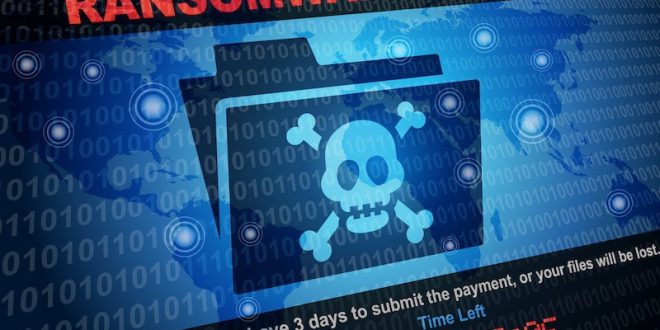Believe your organization is ransomware-proof? Time to rethink that confidence. According toIBM’s latest research, the average cost of a ransomware attack is a staggering US$ 4.54 million. Yes, a single attack can cost your organization million(s)!
What’s bothering is it takes an average of 326 days to identify and contain an attack. And if you are a small business owner, the next stat will make your heart sink: 50% of small businesses hit by ransomware become unprofitable within a month.
Ransomware is the new black and it is wreaking havoc across all organizations around the globe. But don’t panic! This guide is all you need on recovering from a ransomware attack.
Understanding Ransomware Attacks
1. What Exactly is a Ransomware Attack, anyway? 🤔
Put simply, a ransomware attack is basically a digital hostage situation. Attackers use malicious software that encrypts the files on your computer and makes them inaccessible. The attacker then demands a ransom, usually in cryptocurrency, for the decryption key to unlock your files.
2. The Sneaky Ways Ransomware Gets In 🚪
Ransomware often comes through seemingly harmless emails or usual software updates. One wrong click, and you are compromised.
3. Counting the Cost: It’s Not Just About Money 💸
Ransomware doesn’t cost you money; it can damage your organization’s reputation too! Customers and partners take their data too seriously to be mishandled, and the news of ransomware will have long-term consequences.
The Need for a Ransomware Recovery Plan
- Importance of a Recovery Plan
A ransomware data recovery planprovides a structured approach to minimize downtime and data loss in the aftermath of a ransomware attack.
2. Risks of Not Having a Plan
Without a recovery plan, you will be exposing your organization to significant financial and reputational risks. As mentioned earlier, it takes an average of 326 days to identify and contain an attack. And the longer the disruption, the longer you will erode customers and partners’ trust.
Building an Effective Ransomware Data Recovery Strategy
1. Immediate Steps After an Attack
As soon as you detect a ransomware attack in your organization, isolate the affected systems to prevent further spread down the network. Inform your cybersecurity team asap and initiate your recovery plan.
2. The Importance of Creating Immutable Backups
Immutable backups cannot be altered or deleted in any manner, even during an attack. So, ensure to create immutable attacks for a reliable source for data recovery later.
3. Using Windows System Restore
The Windows System Restore allows you to restore your Windows device to a previous state (back in time). It is useful against minor attacks, but may not recover all encrypted files.
4. Decryption Tools to Consider
There are even several third-party tools that allow you to decrypt the files without having to pay any ransom. However, their effectiveness varies and there is no guarantee of full recovery.
Preventive Techniques for Ransomware Attacks
1. Achieving Immutability
Methods like Write Once, Read Many (WORM) technology and object storage will allow you to make your data immutable. This makes your data unalterable during an attack.
2. Importance of Regular Backups
Ensure that your organization creates consistent backups of at least the sensitive and really crucial data. The backups will serve as your data lifeline even in case of an attack. This allows you to restore the systems with less to no downtime.
3. Security Standards to Follow
You can implement robust security measures like antivirus software firewalls and intrusion detection systems. This will allow you to fortify your digital defenses.
4. Educating on Phishing Awareness
One of the biggest causes of ransomware is the human factor. Organizations do not train their employees and contractors to recognize phishing attempts. It is important to note that your employees and contractors’ computers are the entry point for ransomware attacks. So, training them is the most crucial aspect in preventing attacks.
Advanced Security Measures
1. Two-Factor Authentication
Ensure to create two-factor authentication, as it adds an extra layer of security to your organizational data. This will make it difficult for attackers to gain unauthorized access to your systems.
2. Password Policies
Ensure to create strong, unique passwords and enforce policies that require you to change the default passwords from time to time. Believe it or not, this simple step will significantly reduce vulnerabilities in your organization.
3. Logging and Monitoring
Centralized logging and technologies like Software-Defined Storage systems allow you to monitor all of your organization’s data from one single point. You can then ensure to detect any suspicious activity from one point and prevent any unauthorized access before the attack escalates.
Conclusion
Preparing for a ransomware attack is non-negotiable in today’s digital landscape. The idea of this guide was to walk you through the A to Z of ransomware recovery — from the most immediate measures that you need to take to the advanced protective measures that will save your organization’s money, time, and reputation.
Your Next Steps: Time to Level Up Your Security Game
This guide gives you the insights to already be ahead of the curve. However, knowledge alone won’t protect your organization from ransomware. It is all about action. Here’s what you should do next:
- Assess Your Current Security Measures: Review your existing security protocols. And ensure they are up to date or not. Use scenarios to ensure there are no loopholes.
- Consult with Experts: Cybersecurity sounds like something far away from your organization until it’s not. Things like expert’s sound like a joke to many organizations, especially the small ones. But we have already outlined the dangers that small organizations face. So, regardless of your organization’s size, consult an expert. If your organization can afford it, consider bringing in a cybersecurity consultant for an audit.
- Employee Training: As indicated, make sure your team knows the basics of cybersecurity hygiene. After all, an educated team is your first line of defense.
- Regular Updates and Backups: Ensure to keep all your systems updated and regularly back up your data. It sounds simple, but trust us, these are the real lifesavers.
- Stay Informed: Attackers look for new ways to attack your organization and having the latest news and updates will keep you one step ahead of them.
To end: be proactive, take these steps and fortify your digital fortress now.
 HammBurg Be informed with latest news, reviews, entertainment, lifestyle tips, and much more.
HammBurg Be informed with latest news, reviews, entertainment, lifestyle tips, and much more.




